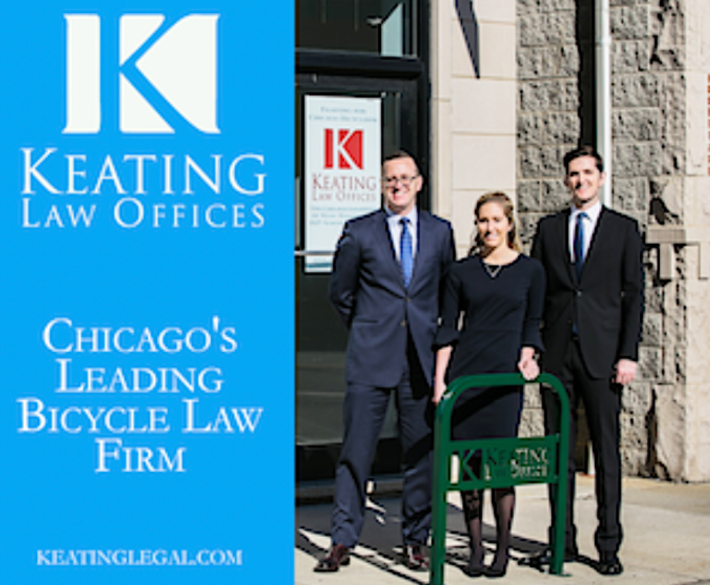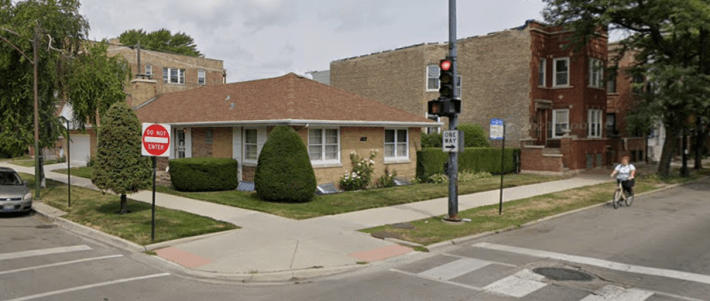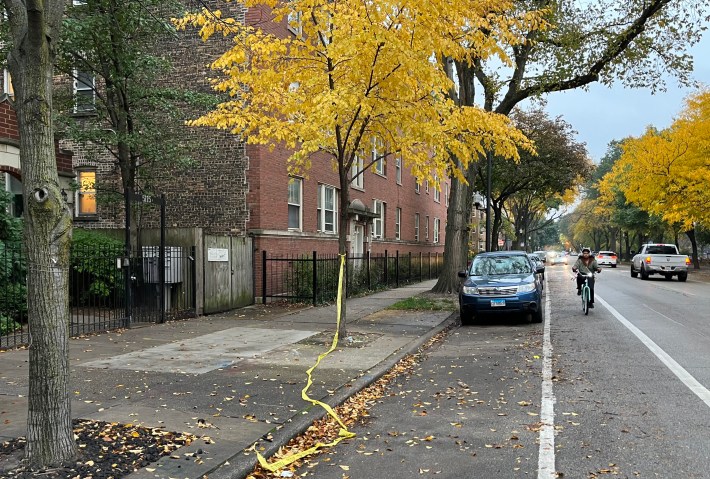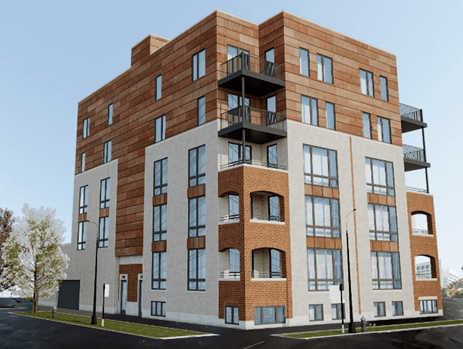
In late December, Ald. Andre Vasquez (40th) rejected a request to replace an expensive single-family home in Andersonville with 18 condos, four of which would be affordable. Vasquez is a outspoken progressive leader, who’s been out front on critical issues from CTA reliability to responding to the needs of asylum seekers. So it’s disappointing to see him refuse to allow more housing to be built in an expensive part of the city, and in close proximity to public transiportation options. But there's a silver lining to this story: While he denied the zoning change, Vasquez has joined the growing ranks of alders committed to a more structural solution to Chicago’s housing shortage.
First, some background. The site, 5400 N. Ashland Ave., is currently occupied by a $750,000 single-family home that straddles two lots. A neighborhood developer requested a zoning change to build 18 condos on the site, four of which would be deed-restricted affordable under city rules. It would have been a prime transit-oriented development: on the #50 Damen bus route, less than a mile from the Berwyn Red Line station, and including only nine parking spots. But Vasquez rejected the request, citing community complaints about the aesthetics of the building and its height, and concerns that it only included four affordable units, 22 percent of the total units. Four years ago, he rejected a request to rezone the site to build a three-story, seven-unit condo building, citing issues with the developer’s track record.

That’s unfortunate. Four affordable units isn’t a lot, but it’s four more than exist today. And the market-rate units would also be helpful for keeping Chicago more affordable. Study after study shows that adding market-rate housing reduces rents for buildings nearby. When renters have other options, they can walk away from a bad landlord or a rent increase. New higher-end units may not be as affordable as older ones, but by creating more options, they help prevent bidding wars for existing apartments. Condos are critical too. They’re generally the cheapest type of housing available to purchase, and more than 60 percent of condo buyers are first time homebuyers.
But Vasquez, like many progressive alders, utilizes a community-driven zoning process. The 40th Ward office shares proposed zoning changes with neighborhoods, who then have a chance to weigh in at public meetings and via online feedback. "More often than not, this process has led to approval of the project," he said. "Less often, there is community feedback that leads to either a decision not to support the project, or, in the case of 5400 N. Ashland Ave., communicating the feedback to the developer so they can make adjustments and resubmit." On Twitter, Vasquez noted that he got 98 comments in support of the proposal and 162 against.
The alder also raised concerns about condos, stating that he would have preferred to see rental units at the site. "People will say condos are affordable, and they can be for those who can afford it, but we need affordable options for those who don’t have the means for [a] down payment." He noted his own family’s history of displacement, moving every two years as rents rose, and pointed out that he was one of the only renters on the City Council. I think that conclusion misses the mark – every time a renter is fortunate enough to buy a condo, they also move out of the rental unit that’s now available for another family.
But the bigger challenge here concerns community input. A transparent process is certainly better than shady backroom deals, and it makes all the sense in the world that neighbors should have a voice in nearby projects. But Vasquez received more than 10,000 votes in the last election. Under the community-driven process, the vast majority the voters who endorsed him as their representative aren't having any influence on this decision at all. Instead 162 hyper-engaged local neighbors come first.
And while the whole city benefits a little bit from the addition of 18 units, the community-driven process caters to nearby neighbors. They have the greatest incentive to show up to a meeting and are most likely to have local concerns about height or traffic. Advocates like Urban Environmentalists are working to mobilize local support for development, but it’s an uphill battle. The folks who would have had a chance to move into those 18 units might live anywhere in the city today, and likely never heard of the meeting at all. Given that this development would invite local backlash but only make a small dent in our housing crisis, it’s not surprising that Vasquez made the decision he did.
This is a citywide problem

The problem is that these decisions add up. In 2020, the Housing Department calculated that we were short 120,000 affordable units. Since then, market rents have shot up, making the problem worse. The reason? Chicago is building new multifamily housing at less than half the rate of other markets nationwide, giving existing landlords more power to raise rents.
Our housing crisis is also part of the reason Chicago has struggled to accommodate more than 28,000 asylum seekers who have arrived since August 2022. They represent a critical long-term opportunity for the city, like the generations of migrants before them. But in the short term, asylum seekers ready to get out of the shelters are struggling to find apartments in a market with few vacancies and high rents.
Chicago used to be better at this. When it’s easy to build more housing, we find ways to accommodate new arrivals. In fact, that’s exactly what used to happen in Andersonville. After the Great Chicago Fire of 1871, Andersonville offered immigrants the chance to buy cheap land and build low-cost wood houses. A rapid period of development followed. In the 1880s there were 43,000 Swedes living in the City. By the 1930s that number had grown to more than 200,000. As Historian Anita Olson Gustafson observes, "Swedish settlers had plenty of opportunities to take advantage of new housing options available to Chicago’s residents." Today those options don’t exist, and migrants are sleeping in CTA buses instead.
This problem affects all of Chicago. It needs a citywide solution. Currently, large parts of the city (including 5400 N. Ashland Ave.) are subject to rules that make it illegal to build anything other than a single-family home. One of the best steps Chicago could take is to update the zoning code to allow two- and three-flats to be built on any lot. Not only would that expand housing supply across the board, but classic two- and three-flats are the most affordable housing options in the city. Support for this change continues to build. Surveys by Streetsblog and Urban Environmentalists have found that current 20 alders already backed this change during the 2023 campaign.
One of those of those City Council members is Andre Vasquez. When asked for comment on this article, he doubled down. "We should eliminate the Single Family Only Zoning designation as it leads to inflated property values, taxes, rents and displacement. Million-dollar home development in many areas leads to a loss of needed density and affordability as well as a loss of naturally occurring affordable housing, such as 2-4 flats." And while he raised concerns about condos, he also acknowledged that “generally, and in the long term” adding more market rate housing is an important part of keeping rents in check.
It’s gratifying to see him back legalizing three-flats. It also makes a lot of sense for progressive alders. Taking a tough vote on an individual development only creates a small number of units, but can invite a lot of local criticism. But voting for a broader bill creates a much larger number of units across the city, without focusing the debate on a specific development. Plus it doesn’t hurt that his closest challenger in the last election, Christian Blume, also endorsed ending the three-flat ban.
A better path forward
Today, housing advocates and progressive alders are caught in a lose-lose situation. When housing decisions are made block by block, Alders must either cave to NIMBY objections, or take principled stances and risk losing re-election. It’s time to flip the script, and push through reforms that make it easier to build low-cost housing citywide.
Hopefully Vasquez works out a deal at 5400 N. Ashland Ave. to support more units down the line. But the real prize would be legalizing three-flats citywide. If we really want to be an affordable and welcoming city, we need to build more housing in every neighborhood.
What's going on with Winnemac Avenue Pedestrian Improvements?
In other 40th Ward news, a Streetsblog reader asked why the proposed Winnemac Avenue Pedestrian Improvements, which also would include bike upgrades, discussed by Vasquez here, are an item in the ward's Participatory Budgeting election. That person argued that it shouldn't be necessary for Vasquez's constituents to approve the project in an election for it to get funded. They noted that last October an allegedly intoxicated car-driver fatally struck ceramicist Don Heggemann, 59, who was biking near Winnemac at 5115 N. Damen Ave. in a non-protected bike lane. So an upgrade to protected lanes is urgently needed.

Here's the statement the ward office provided on that subject:
"As for the Winnemac Avenue Pedestrian Improvements, the Chicago Department of Transportation typically wouldn't fund those improvements since it's a residential street. While that area is near where the fatal crash occurred, the crash itself occurred on Damen. Since Damen is an arterial, we are seeing if CDOT can fund improvements there, but are waiting on the completion of CDOT's traffic study of the area to see what types of improvements would make the area the safest."

"Damen is up for arterial resurfacing next year. Because of the Complete Streets Ordinance, the city is required to include pedestrian and bike safety improvements in any arterial resurfacing, so CDOT will fund some of the pedestrian safety improvements specifically on Damen. We are involved in the planning process and pushing for specific improvements at Winnemac and Winona, so hopefully we'll be able to share details of those plans as soon as they are finalized. The rest of Winnemac will be funded through menu [the ward's annual $1.3 million in discretionary infrastructure funds], and depending on the results of the participatory budget election. To be clear, we are planning on funding improvements on Winnemac regardless, but if it is one of the projects chosen through PB, that will give us more funds to work with."
That sounds like a reasonable approach to us, but free to voice your perspective on the issue in the comments section.

Did you appreciate this post? Please consider making a tax-deductible donation to help Streetsblog Chicago keep publishing through 2025. Thank you.





